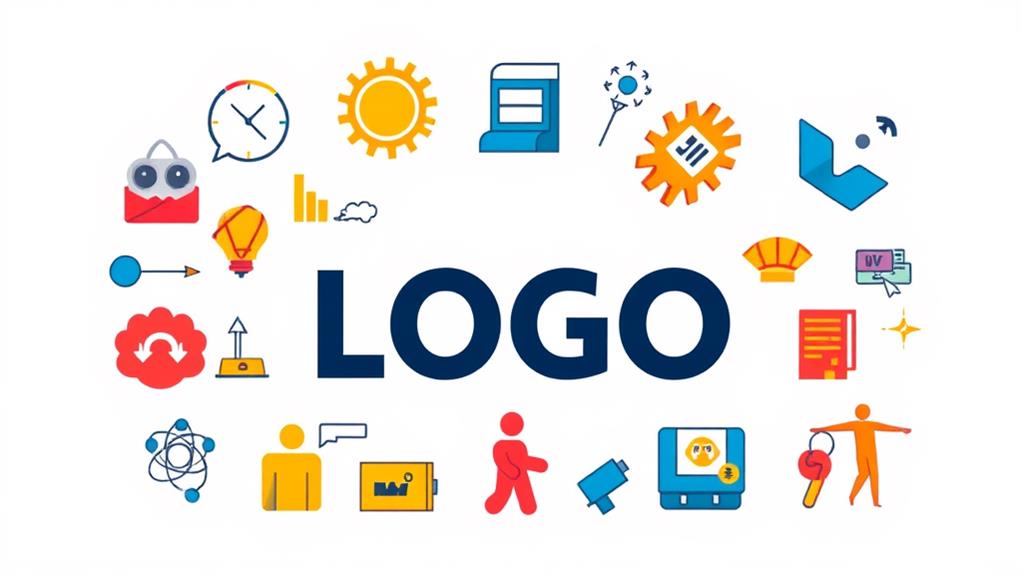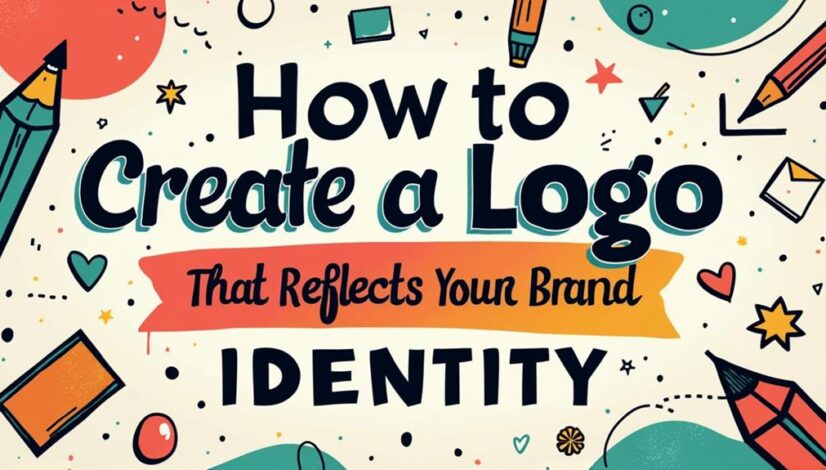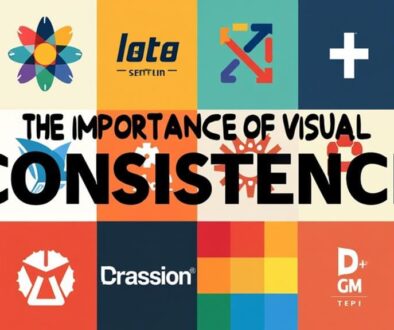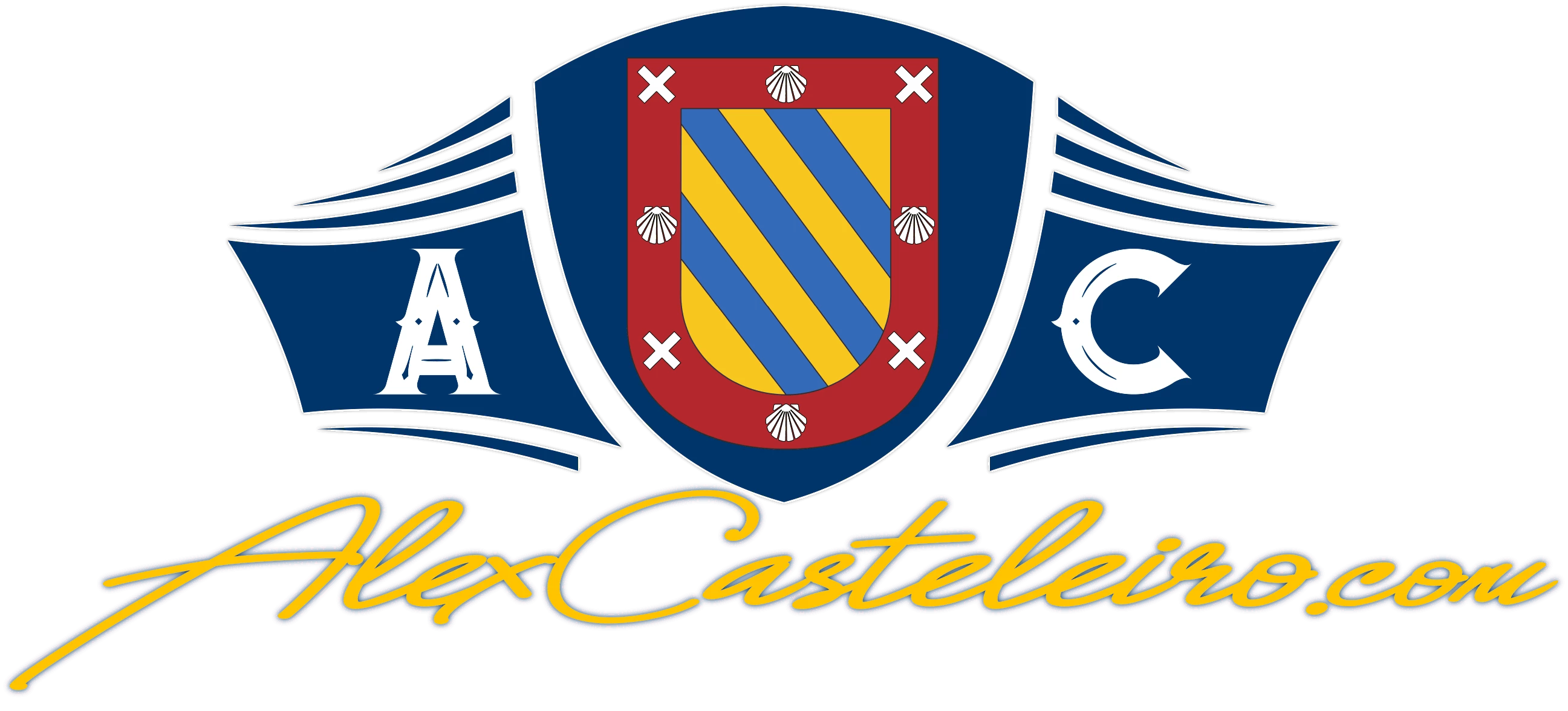How to Create a Logo That Reflects Your Brand’s Identity
To create a logo that reflects your brand's identity, start by articulating your core values and unique selling proposition. Conduct thorough audience research to understand preferences, while analyzing competitor logos for inspiration. Choose a style that aligns with your brand—minimalist, vintage, or abstract—ensuring it can adapt across various platforms. Carefully select a color palette that evokes the desired emotional response and resonates culturally. Typography should communicate your brand's personality, with readability prioritized. Gather feedback on initial designs to refine your logo into a memorable visual representation that resonates with your audience, leading to deeper insights on effective branding strategies.
Key Takeaways
- Clearly articulate your brand values and mission to guide the logo design process.
- Research your target audience's preferences and cultural influences to create a relatable logo.
- Analyze competitors' logos to identify trends and ensure your design stands out.
- Choose a versatile color palette and typography that conveys your brand's personality effectively.
- Gather feedback through surveys and focus groups to refine your logo design based on user preferences.
Understand Your Brand

To effectively craft a logo that embodies your brand identity, it is vital to thoroughly understand the essence of your brand. Begin by articulating your brand values—these core principles serve as the foundation for your identity. What does your brand stand for? Your mission statement should encapsulate this ethos succinctly, providing clarity on your purpose and direction.
Next, consider your unique selling proposition (USP). What distinguishes your brand in a crowded marketplace? This differentiation is essential for resonating with your target market. Your logo must visually convey these elements, establishing an emotional connection that fosters loyalty and trust.
Visual storytelling plays a pivotal role here. Each design choice—from color palette to typography—should reflect not only your brand's personality but also its cultural relevance. This guarantees that your logo speaks to your audience in a language they understand and relate to, enhancing audience perception.
Moreover, effective brand messaging is integral to this process. Your logo should encapsulate the narrative you wish to communicate, harmonizing with your broader marketing strategy. It should evoke the desired emotions while remaining simple and memorable.
Research Your Audience
Understanding your audience is essential, as it lays the groundwork for a logo that resonates deeply with those you aim to engage. To craft a logo that speaks to your target demographics, begin with thorough research that explores audience preferences and cultural influences. Understanding who your audience is allows you to create user personas, which serve as valuable tools for visualizing the traits, behaviors, and values of your ideal customers.
This approach fosters a strategic mindset, enabling you to design a logo that not only captures attention but also builds emotional connections. Consider how colors, shapes, and typography evoke feelings that align with your brand's identity and the sentiments of your audience. For instance, vibrant colors may appeal to younger audiences seeking excitement, while muted tones might resonate with more sophisticated consumers.
Furthermore, staying attuned to market trends is vital. Analyzing current design trends can provide insight into what captivates your audience today, but remember to balance trendiness with timelessness. A logo should be adaptable, maintaining relevance as audience preferences evolve.
Ultimately, the key to effective logo design lies in a profound understanding of your audience. By weaving together insights from demographic research, cultural influences, and emotional resonance, you can create a logo that not only represents your brand but also forges lasting connections with your audience, ensuring it stands out in a crowded marketplace.
Analyze Competitors

To craft a logo that stands out, begin by identifying your key competitors and understanding their visual narratives.
Analyze their design choices, color palettes, and overall aesthetic to uncover patterns that resonate within your industry.
This evaluation will not only inform your logo development but also guarantee that your brand identity remains distinct and memorable.
Identify Key Competitors
Analyzing key competitors is an essential step in the logo design process, as it provides valuable insights into industry standards and consumer expectations. By identifying your primary competitors, you can better understand their brand positioning and the visual language they employ, which is vital for effective market differentiation.
Begin by compiling a list of direct competitors—those who operate in the same niche or market segment. Examine their logos, paying close attention to color schemes, typography, and iconography. Each element conveys messages about their brand values and target audience.
For instance, a tech company may opt for sleek, modern fonts and a minimalist design, while a luxury brand might choose elegant, ornate typography that evokes sophistication. Understanding these nuances enables you to carve out a unique identity for your brand.
Evaluate Their Visual Styles
With a clear understanding of your competitors, the next step is to evaluate their visual styles, which can reveal not only trends but also opportunities for innovation.
Analyzing their logos provides insights into effective visual elements and emotional impacts that resonate with their target audiences. Consider the following aspects:
- Design Trends: Observe the prevalent styles—are they modern, vintage, or minimalist? Identifying these trends can inform your design choices.
- Brand Symbolism: Recognize how competitors use symbols to convey deeper meanings. This can enhance your own brand storytelling.
- Cultural Significance: Evaluate how visual elements reflect or respond to cultural contexts, ensuring relevance and connection.
- Simplicity Principles: Consider whether your competitors embrace simplicity principles in their designs, as timeless designs often prioritize clear and straightforward visuals.
In addition, pay attention to scalability considerations and logo variations. A successful logo adapts across various mediums without losing its essence.
Choose Your Logo Style
Selecting the right logo style is a pivotal step in crafting a visual identity that resonates with your audience. The logo serves not just as a mark but as a narrative, encapsulating the essence of your brand.
To begin, consider a minimalist design that emphasizes simplicity and clarity, allowing your message to shine through without distraction. This approach resonates well with contemporary consumers who appreciate clean lines and straightforward communication.
Alternatively, you may opt for vintage aesthetics, which evoke nostalgia and authenticity. This style can be particularly effective for brands aiming to convey tradition and enduring quality. Incorporating geometric shapes can add a modern flair, creating a sense of structure and balance that appeals to a design-savvy audience.
For those seeking to push boundaries, abstract symbols offer a compelling way to represent complex ideas visually. This approach invites interpretation and encourages engagement, making your logo memorable.
A typography focus can also be a powerful choice; carefully selected fonts can communicate personality and ethos, ensuring your brand stands out.
Consider icon integration for a cohesive look, allowing icons to complement text and enrich the overall design. Playful elements can introduce an inviting tone, making your brand approachable while maintaining professionalism.
Ultimately, the choice of logo style should align with your brand's identity, aspirations, and the emotions you wish to evoke in your audience. Each style carries its own narrative, so choose wisely to create a lasting impression.
Select Color Palette

How can the right color palette transform your brand's identity? The selection of colors is not merely an aesthetic choice but a strategic decision that harnesses the power of color psychology to evoke emotions and reinforce your brand's message. A well-curated color palette can establish brand consistency while guaranteeing visual harmony across all platforms.
To achieve an effective color palette, consider the following:
- Emotional Impact: Different colors evoke distinct feelings; for example, blue instills trust, while red ignites passion.
- Cultural Significance: Understand the cultural implications of colors in your target market to avoid misinterpretations.
- Seasonal Colors: Adapt your color choices to resonate with seasonal trends, enhancing relevance and relatability.
- Accessibility Considerations: Confirm your color pairings are accessible to all, including those with visual impairments, by adhering to contrast guidelines.
Additionally, the interplay of colors can create a visual hierarchy that guides consumers' attention, making your logo memorable.
As you explore color trends, aim for a palette that reflects your brand's essence and stands the test of time, avoiding overly trendy choices that may quickly fade.
Thoughtful color pairing will not only help in distinguishing your brand but also in creating a lasting emotional connection with your audience.
Ultimately, the right color palette is a foundation upon which your brand identity can flourish, allowing for a powerful representation of your values and mission.
Pick the Right Typography
The typography you choose for your logo serves as the visual voice of your brand, conveying its personality and values at a glance.
Selecting the right font style is essential, as it must not only resonate with your target audience but also guarantee readability and clarity across various mediums.
Font Style Selection
Choosing the right typography serves as an essential element in crafting a logo that resonates with your brand identity. The selected fonts must not only reflect the essence of your brand but also guarantee style consistency across all platforms.
A strategic approach to font pairing can elevate your logo's visual impact, harmonizing your message with aesthetic appeal.
Consider these key elements when selecting font styles:
- Brand Personality: Choose fonts that embody the character and tone of your brand, whether it's modern, vintage, or playful.
- Target Audience: Understand the preferences and expectations of your audience, tailoring your typography to resonate with their sensibilities.
- Versatility: Opt for typefaces that maintain clarity in various sizes and applications, from digital to print.
- Emphasis on Hierarchy: Utilize contrasting fonts to create a visual hierarchy, guiding the viewer's attention to the most critical aspects of your logo.
Readability and Clarity
A logo's typography should prioritize readability and clarity, serving as the cornerstone of effective brand communication. The choice of typeface greatly impacts how your brand is perceived; consequently, strategic selection is paramount.
Employing a font that is legible at various sizes and distances enhances the visual hierarchy, ensuring that your message is immediately grasped by the audience.
Design simplicity is key to achieving this clarity. A cluttered or overly ornate font can obscure your brand name, diluting its impact. Opt for clean lines and balanced spacing that guide the viewer's eye effortlessly. This approach not only promotes instant recognition but also facilitates memorability, allowing your brand to stand out in a crowded marketplace.
Incorporating contrast within typography—such as varying weights and sizes—further reinforces visual hierarchy, drawing attention to essential elements of your logo. This intentionality in design fosters a seamless connection between the viewer and your brand identity.
Ultimately, mastering typography in your logo design is about creating a harmonious blend of visual appeal and functional clarity, ensuring that your brand communicates effectively at first glance.
Brand Personality Alignment
Selecting typography that resonates with your brand's personality is essential for establishing a cohesive identity. The right font has the power to communicate your brand traits and enhance visual storytelling, ensuring that your logo not only captures attention but also conveys your brand's ethos.
Typography is more than mere letters; it's a visual representation of your brand's character.
To achieve effective brand personality alignment through typography, consider the following:
- Serif Fonts: Evoke tradition and reliability, often associated with established brands.
- Sans-Serif Fonts: Convey modernity and simplicity, ideal for tech-savvy and innovative brands.
- Script Fonts: Impart elegance and creativity, perfect for luxury or artistic brands.
- Display Fonts: Make bold statements and attract attention, suitable for brands that seek to stand out.
Create Versatile Designs

Versatile designs serve as the backbone of an effective logo, enabling it to seamlessly adapt across various platforms and applications. A logo must embody iconic imagery that transcends the confines of size and medium, guaranteeing its impact remains unchanged whether printed on a business card or emblazoned on a billboard.
To achieve this, scalable designs are imperative; they should maintain clarity and integrity in both large and small formats.
The essence of a memorable logo lies in its adaptability. Utilizing adaptable formats allows for smooth shifts across digital and physical spaces, guaranteeing consistent branding. By integrating timeless elements, designers can create visuals that not only resonate today but also withstand the test of time, fostering brand loyalty.
A simplicity focus is essential; the most effective logos often feature memorable shapes that are easy to recognize and recall. This simplicity invites consumers to engage with the brand on a deeper level, as unique symbols become synonymous with the values and mission of the organization.
Consider how versatile applications can enhance your logo's effectiveness. A design that works across diverse backgrounds, colors, and materials maximizes visibility and relevance.
Ultimately, a well-crafted logo that embodies these principles becomes an enduring representation of your brand, fostering recognition and trust. In a world where first impressions are pivotal, creating a logo with versatile designs guarantees your brand identity is not only seen but also remembered.
Gather Feedback and Refine
Gathering feedback is a crucial step in the logo design process, serving as a bridge between initial concepts and a polished final product. This phase allows designers to leverage user input, ensuring that the logo resonates with the intended audience while aligning with brand identity.
Engaging stakeholders and potential customers in the feedback loop not only enhances the design but also fosters a sense of ownership among the audience.
To effectively gather and utilize feedback, consider the following strategies:
- Conduct Surveys: Use structured surveys to collect quantitative data on various design iterations, helping to pinpoint preferred elements.
- Focus Groups: Organize small groups to elicit qualitative insights about emotional responses and perceptions related to the logo.
- A/B Testing: Present different logo variations to segments of your audience to assess which design garners stronger engagement and recognition.
- Iterative Prototyping: Create multiple iterations based on feedback, allowing for a dynamic design process that evolves with user preferences.
Frequently Asked Questions
What Tools Can I Use to Design My Logo?
When designing your logo, various tools can enhance your creative process. Design software such as Adobe Illustrator and CorelDRAW offer robust features for precision and scalability.
Additionally, platforms like Canva provide user-friendly interfaces for quick designs.
To fuel your creativity, explore logo inspiration on websites like Behance and Dribbble, where you can analyze current trends and gather ideas.
Employing these resources strategically will empower you to create a visually compelling and distinctive logo.
How Much Should I Budget for Logo Design?
How much is your brand's identity worth? When considering logo design pricing, it is essential to evaluate various budget considerations.
A professional logo can range from a few hundred to several thousand dollars, depending on complexity and designer expertise. Investing in quality design guarantees a lasting impression and alignment with your brand's vision.
Allocate your budget strategically to achieve a logo that not only captivates but also resonates with your target audience.
Can I Create a Logo Without Design Experience?
Creating a logo without design experience is achievable with a strategic approach. Familiarize yourself with logo design basics such as color theory, typography, and composition.
Utilize DIY logo tips by leveraging online tools and templates, which simplify the design process. Engage in brainstorming sessions to clarify your vision and values.
How Long Does It Typically Take to Design a Logo?
Research indicates that 70% of consumers recognize a brand by its logo alone, underscoring the significance of an effective design process.
Typically, designing a logo can take anywhere from a few days to several weeks, depending on the complexity and the need for brand consistency.
Engaging in thorough research, brainstorming, and iterative feedback is essential to guarantee the final design conveys the brand's essence while resonating with the target audience.
Should I Trademark My Logo After Creation?
Trademarking your logo post-creation is a strategic move for ensuring logo protection.
Trademark registration not only safeguards your brand's visual identity from unauthorized use but also enhances your business's credibility and value.
By securing exclusive rights to your logo, you create a distinct presence in the market, making it easier for consumers to recognize and connect with your brand.
Investing in trademark registration is a vital step in establishing a lasting brand legacy.
Conclusion
In the intricate tapestry of branding, a logo emerges as a beacon, illuminating the essence of a brand's identity. When carefully crafted, it dances harmoniously with color and typography, creating a symphony that resonates with the audience. Each element, meticulously chosen, weaves a story that captivates and endures. Through thoughtful refinement, a logo transforms from mere design into a powerful emblem, encapsulating the soul of the brand and forging an indelible connection with its community.




